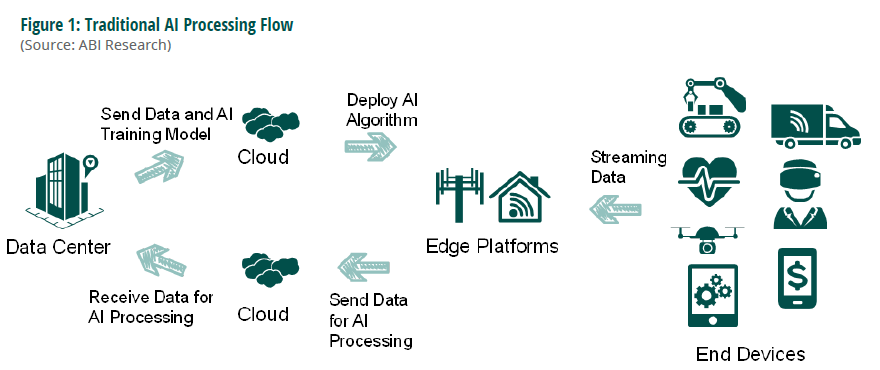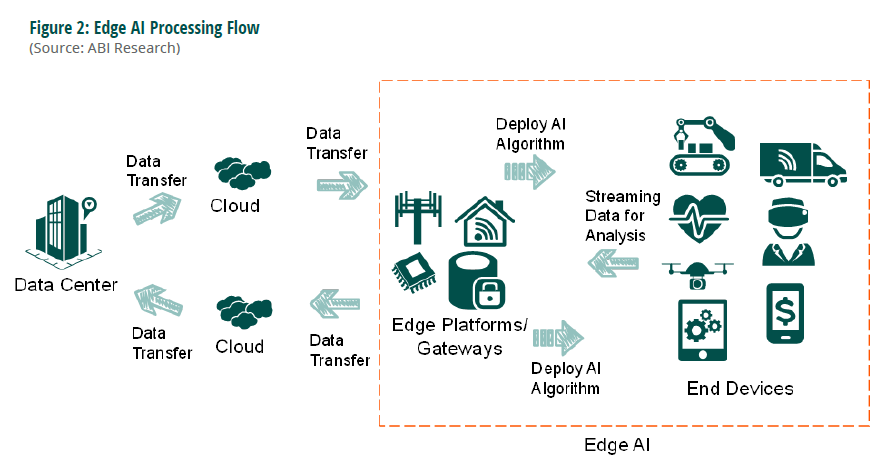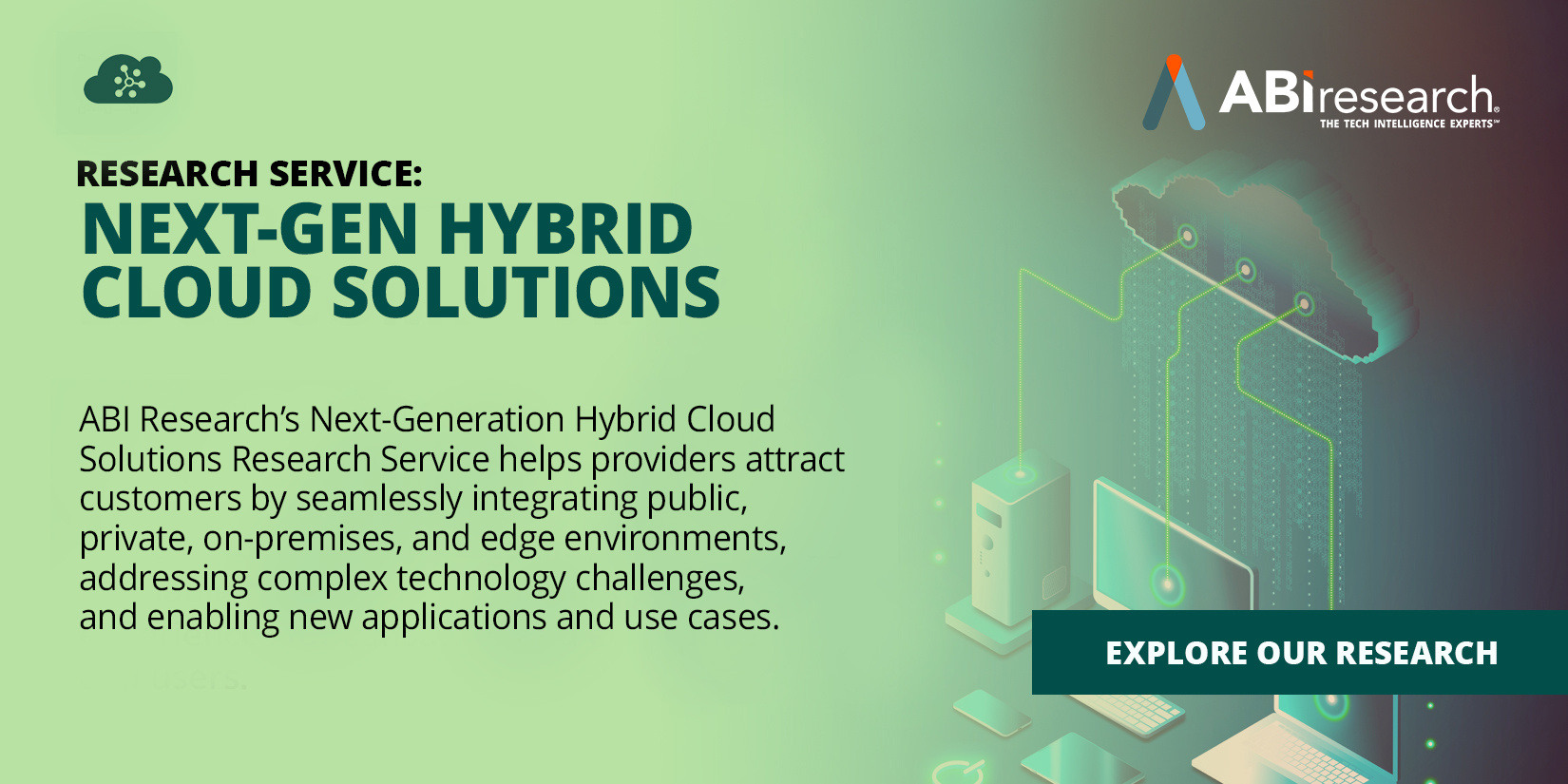Edge Artificial Intelligence (AI) computing applications and use cases are gaining popularity among many companies. This is because, while AI benefits data processing and analysis, traditional AI sees its limits. As companies’ data needs grow significantly, transferring that data from a device or system to a centralized data center/cloud network for processing leads to higher latency and soaring network costs. Many AI applications, such as mobile robots, rely on real-time data to function operationally. For these reasons, edge AI is seen as the way forward.
In this article, you’ll come away with the following:
- A working definition of edge AI
- The benefits of deploying AI at the edge
- Applications and use cases of edge AI in four industries
- Several real-world examples of edge AI
What Is Edge AI?
Edge AI is the implementation of AI platforms and solutions on the edge of a network, close to the end user's environment Edge AI deployments are typically done on devices such as edge computers, Internet of Things (IoT) hardware, and small, localized data centers.
Instead of being processed at a large, centralized data center, edge AI use cases enable AI inferences and computations to be processed on edge servers, gateways, and IoT devices deployed closer to the user. In this regard, even if Internet connectivity is unavailable, data generated by smart cameras, sensors, and similar IoT devices can still be processed within the device.
AI at the edge can be implemented on various hardware, including Central Processing Units (CPUs), Neural Processing Units (NPUs), and microcontrollers. Data are processed locally in an edge AI ecosystem, with ML models running directly in the edge devices. These edge AI/ML devices use embedded models to monitor, collect, and process device data. Businesses can then use the information to optimize business processes, correct any errors, and forecast future scenarios.
Figure 1 and Figure 2 compare the processing flows between traditional AI and edge AI computing applications.
Here is traditional AI.

And this is the processing flow for an edge AI use case.

What Benefits Can Be Expected with AI at the Edge?
An edge AI deployment provides a wide range of noticeable benefits for companies, including the following:
- Reduced Network Latency and Lower Bandwidth Consumption: Transferring large sums of data to and from the source to a remote data center takes time, resulting in latency on the neural network. Edge AI computing can reduce network latency by processing locally at the device/platform level. In turn, this reduces the cost of network bandwidth.
- Real-Time Analytics: Edge AI’s high-performance features can be used by businesses to analyze information in real time at the source device or platform.
- Lower Power Consumption: Due to AI’s fewer data transfer needs at the edge, devices don’t require as much power to operate functionally.
- Better Business Outcomes: Time is money, and edge AI solutions provide companies with the benefit of quicker decision-making. When operational data can be processed quickly, enterprise users of edge AI will see an increase in efficiency and a reduction in operating costs.
To better understand how edge AI can be used in the real world, we'll take a look at four industries using this technology. Each section also discusses an example of edge AI being applied.
The video below provides a brief sample of said examples.
Retail Applications and Use Cases of Edge AI
Supermarkets are leveraging sensors and camera vision images to compile and analyze various data relating to empty shelves. This edge AI application can then notify store clerks about stockouts on the floor aisle, ensuring a better customer experience. Moreover, in the face of retail theft on the rise, some manufacturers are investing in facial recognition and eye scanning to prevent shoplifting.
Example
An example of AI the edge in retail comes from the alliance between computer vision startup Deep North and technology juggernaut NVIDIA. Built on NVIDIA’s EGX computing platform, Deep North’s software offering uses image analysis from store video cameras and DL algorithms to aid malls and brick-and-mortar retail stores with creating an improved in-store customer experience. Key insights drawn from this edge AI deployment include:
- Customer traffic
- Retail store heatmaps
- Identification of peak and long wait times at checkout counters
- Demographics of customers
- Conversion metrics
Supply Chain Applications and Use Cases of Edge AI
Supply chain operators can use edge AI computing to manage and forecast inventory levels. AI at the edge processes and analyzes data from Global Positioning System (GPS) sensors, Radio Frequency Identification (RFID) tags, and other IoT edge devices. This information enables businesses to identify potential raw material shortages and slow-moving products. Edge AI can also help optimize logistics and shipping processes, allowing companies to optimize shipping routes and reduce the delivery backlog.
Example
Taiwanese electronics manufacturer Lanner deploys edge AI appliances on trucks, subways, and ferries to remotely monitor distributed mobile vehicles.
In this example, a car ferry operator leveraged Lanner’s V6S edge computing appliance for onboard detection, surveillance, traffic control, and passenger safety. The V6S edge AI solution is designed for public video surveillance, recording, and analytics. The edge neural network was crucial to keeping ferry operations running smoothly due to the need to operate multiple ferries daily in as challenging and volatile an environment as the ocean.
Healthcare Applications and Use Cases of Edge AI
The timely collection of patient-specific information can be a matter of life and death in the healthcare industry. Thankfully, edge AI can help.
As previously stated, edge AI platforms, medical devices, and other technologies enable data collection closer to the source. This enables doctors and medical researchers to extrapolate real-time insights and make quicker decisions.
Examples of healthcare use cases that can benefit from edge AI include virtual patient services, remote patient monitoring, health tracking through medical devices, and analysis of scanned images.
In addition to providing improved healthcare services, edge AI allows for a more robust infrastructure, low-latency processing, reduced cost of bandwidth, and enhanced patient data privacy.
Example
One good example of the healthcare industry applying edge computing and AI workflows is laparoscopy. Laparoscopy is a minimally invasive surgery performed in the abdomen or pelvic area. This surgery involves a medical device called a laparoscope, which provides light and feeds an image to a remote video monitor.
When the laparoscope is edge AI-supported, surgeons gain ultra-low latency streaming. Moreover, edge AI-powered data image processing provides the following advantages for healthcare outcomes:
- Bolsters the surgeon’s efforts in identifying anomalies
- Provides automatic adjustments
- Detects bleeding in real time
Manufacturing Applications and Use Cases of Edge AI
A staple of smart manufacturing is making machines more “intelligent.” A higher level of machinery intelligence enables higher-level decision-making, autonomous movement, and predictive maintenance.
So how does edge AI fit into the vision of smart manufacturing? Here are a few use cases:
- Quality Control: AI algorithms and DL models are used to monitor and detect the quality of manufactured products in real time, helping identify defects and, ultimately, reducing waste.
- Predictive Maintenance: A combination of sensors, camera images, and trained AI models can monitor plant machinery and equipment over time. The data collected are analyzed to help early identification of machinery breakdown, ultimately reducing plant downtime.
- Self-Healing/Self-Optimization: Machine learning and deep learning technologies can process a constant stream of data from manufacturing machinery, which ensures the machines are optimized and efficient all the time. This is far more preferable than depending on periodic/scheduled maintenance, which causes production downtime.
Example
Advantech offers enterprise users IoT intelligent systems, machine automation, embedded edge computing, and embedded systems.
With sustainability in mind, a large semiconductor manufacturer came to Advantech to implement a smart factory system that reduces carbon emissions across its worldwide facilities.
As part of the edge AI solution, smart sensors and power meters were deployed and integrated throughout one of the manufacturer’s facilities. All the data generated by these IoT devices were connected to a back end collection platform. This enabled the client to monitor plant data in a remote and centralized location.
Ultimately, this edge AI deployment led to energy savings of about 10% at the manufacturing site.
Opportunities Await
Today’s AI applications and use cases are data-intensive and have higher security demands. Deploying AI and ML on the edge helps alleviate these developer pain points.
The need for edge AI hardware, no-code software providers, and professional services is increasingly prevalent. This demand is derived from the greater adoption of smart IoT devices, demand for real-time and low-latency processing, increasing focus on distributed working, and an emphasis on digitalization and automation in many industries. Several government initiatives and regulations have also encouraged the adoption of edge AI.
To identify the business opportunities and strategic steps awaiting edge AI solution providers and enterprise end users, check out our Edge AI Market: Exploring This Progressively Complex, Yet High-Growth, Space Research Highlight. This content is part of ABI Research’s Next-Generation Hybrid Cloud Solutions Research Service.

